Cab aggregators are proliferating. They are drawing diverse elements of the concept of shared mobility.
Story by: Ashish Bhatia
Cab aggregators is a global phenomenon. It is redefining the very basis of public transportation, and India is not an exception to it. The cab aggregator business model is also proving to be disruptive. It continues to proliferate under the guise of aggregators like Ola and Uber. Both the aggregators are no longer limited to metro cities. Bullish in an environment that is no less competitive or even hostile, the two cab aggregators are pushing their way forward, irrespective of whether they are bleeding or just about breaking even. There is a certain opacity that surrounds the cab aggregator business model many will agree. The fact is, cab aggregators are proliferating. They are proliferating despite the ire of existing cab organisations, and despite facing several litigations. A capital intensive business model, cab aggregators have been fighting out with state-run taxi and auto-rickshaw operators and unions, which claim to have been adversely affected. Such is the disruptive nature of the cab aggregator business model that it is accused of taking away half the taxi and auto-rickshaw operators’ potential to earn. The operators and unions have been very vocal about this. They are compelling the government at the centre as well as at the state level to look into their grievances and come out with a solution. The government is expected to play god in the form of cab aggregator policy.
OEM play
As cab aggregators and taxi and autorickshaw operators, albeit through their unions, fight it out, OEMs seem to warm up to the concept of shared mobility. They see it as an opportunity. For cab aggregators, it may well be an opportunity to make good profits. Recent associations between automakers like Mahindra and Tata Motors and the two (Ola and Uber) aggregators are well known and well publicised. Interesting is the recent association between Tata Motors and Uber Technologies Inc. to provide driver partners on Uber platform. This association will enable owners and drivers affiliated to Uber to buy Tata cars using flexible financing solutions from Tata Capital Financial Services and Tata Motors Finance. They will get insurance from Tata AIG. Madhu Kannan, Member – Group Executive Council and Group Head – Business Development and Public Affairs, Tata Sons, is known to have said that the move will help to turn individual entrepreneurs into a formal workforce. Had this arrangement not emerged, it would have been very difficult for individuals to access formal financing modes and purchase vehicles. Eric Alexander, head of business at Uber Asia is known to express that the association with Tata Motors will make it easier and affordable for drivers to get into the micro-entrepreneurship mode.
Last year, Tata Opportunity Fund invested in Uber. Through its association with Tata Motors, Uber, claim industry sources, is under the impression that its prospects in India are bright. Not be left out, Ola and Mahindra have also entered into an association to bring 40,000 drivers into the shared mobility space. The duo is aiming at vehicle sales and financing to the tune of USD 400 million (Rs.2,600 crore). Drivers affiliated to Ola can avail of an integrated ‘Mahindra-Ola’ package that includes Mahindra cars at special prices. Drivers will be also able to avail of attractive financing with zero down payment at attractive interest rates. Subsidised insurance premiums are among the list of other benefits. Mahindra and Ola are certain to explore other areas too, in an effort to build next generation mobility solutions including those that facilitate a unique transportation business case. “We are marrying the Ola and Mahindra ecosystems,” averred Anand Mahindra, Chairman and Managing Director, Mahindra & Mahindra, recently. “As we go along we will keep re-inventing and add new business models,” he said. Expressed Bhavish Aggarwal, Co-founder & CEO, Olacabs, that the move will help his company build a significant scale through mobility options including electric cars.
Alliances with OEMs are happening at a time when cab aggregators are seen taking some tough decisions. Ola, for example, has announced that it has shut down ‘taxi for sure’. Cab aggregators, it is clear, are focusing on rationalising costs, the slowdown in funding evident. The reason often given is business realignment. The cost reduction achieved by Ola (by shutting down ‘taxi for sure’) is said to be to the tune of Rs.30 crore a month. SoftBank-backed Ola is also claimed to be looking to reduce its cash burn as the battle with Uber intensifies. Uber recently sold its cash-guzzling China operations to rival Didi Chuxing, which is also a minority investor in Ola. Uber Technologies Inc. will redeploy 150 engineers from its China operations to other key markets in South East Asia. The China deal is expected to allow Uber to up its ante in India. A significant portion of USD 3.5 billion funding Uber has raised is likely to find its way into its Indian operations. This will exceed Ola’s USD 500 million funding.
Battle of the Titans
Having raised more than USD 15 billion and valued at USD 68 billion, Uber is known to have a long bench of investors from venture capitalists and hedge funds to sovereign wealth funds. It was only recently that Didi invested USD one-billion in Uber. Ola, according to industry analysts, in a counter-response, is strengthening its presence across various price points with multiple offerings to tap into the booming cab transportation segment in the country. In a bid to prepare for intense competition, Ola has come to offer ‘Óla Micro’, a low cost air-conditioned cab service in 90 cities; Ola Lux is a premium luxury cab service that includes Jaguar, Mercedes-Benz, Audi, BMW, Toyota Camry, Fortuner and Honda Accord cabs; Ola Rental and Ola Outstation are new additions. Passengers can rent a cab on an hourly basis under Ola Rental. In the case of Ola Outstation, it facilitates inter-city transportation. Not just that, through Ola Corporate, the cab aggregator is also looking at corporate entities, which rely on transporters to provide cabs. Ola plans to get as many as 10,000 companies onto the platform. In comparison to Ola’s rising aggression, Uber, in 2015, significantly increased its market share by spending on acquiring cabs. At times huge subsidies to drivers were paid claim industry sources. Low fares were offered to customers with flexible payment options, they add. This helped the market share of Uber soar to 40 per cent at the beginning of this year from just five per cent a year ago. Ola’s cheapest offering, Ola Micro has however helped it to put up a tough fight. The service, launched early March 2016, has helped Ola reverse much of last year’s (2015) market share loss to Uber. Ola has managed to simply race ahead of its rival. Not very convinced, industry sources claim that Ola has had a massive cash burn in the process.
A new element to the battle are the local taxi and autorickshaw operators and their unions. It is no secret that they are up in arms against the two cab aggregators. Ironically, the fight between traditional cab and autorickshaw operators and cab aggregators is happening with many cab and autorickshaw operators having aligned with either of the two cab aggregators. More are said to be on their way. There also those who have moved back since they did not find it lucrative.
Consider the case of Mumbai-based Sudesh (name changed on request) for example. He joined Ola six months back, and availed of its self financing options to buy a WagonR. Claiming to earn between Rs.20,000 to Rs.30,000 per month, Sudesh is of the opinion that he cannot imagine earning so much anywhere else. Rakesh has refrained from moving over to Ola or Uber. He did not switch over to Meru and TAB cab either. His observation is that not all those who moved over are earning well. He fears that these companies (cab aggregators) may decide to withdraw the moment they see their earnings dwindle. He draws attention to Ola’s closure of ‘taxi for sure’.
On June 21, 2016, a taxi union in Mumbai organised a one-day strike to mark a protest against Ola and Uber. Representing black and yellow cab operators, the union protested against the two cab aggregators for adversely affecting their business. The bone of contention is the lack of a level playing field according to the taxi union sources. They are of the opinion that taxi transport services can be provided only by those taxi owners who possess necessary contract permit issued by the state government under the Motor Vehicles (MV) Act. Under the said Act, all such cab and taxi drivers have to have Public Service Vehicle (PSV) badges which are issued by the Government’s State Transport Authority after verifying the antecedence of the driver. All such cabs and taxis are required to be fitted with a functioning electronic meter. They have to charge only the specified fare.
Taxi union sources point out that the Ola and Uber cabs do not have an electronic meter. They mention further that aggregators do not therefore adhere to the fare structure the Roads and Transport Authority has determined for taxis. They also indulge in surge pricing and similar such alleged malpractices claime sources. Ola and Uber cabs are tourist vehicles, and under section 88(9) of the MV Act, inform sources. They add, that the duo are granted permits to promote tourism, and are not taxis or cabs. According to Aspi Chinoy, senior counsel appearing for the Association of Radio Taxis (fleet taxi operators), Uber and Ola are in effect and substance running a scheme without having applied for and received the necessary license and hence are clearly violating the provisions of the law. The court that the Association of Radio Taxis has filed a case in, is known to have questioned the very basis for tourist cabs operating as city cabs without having a city cab permit, nor having taxi stands dedicated to them. Commuters are of the opinion that over the black and yellow cabs or autorickshaws, which refuse to ferry passengers far more often than they agree to, the cab aggregators offer a comfortable, air-conditioned and cost-efficient cab ride.
An aggregator cab is booked online whereas a black and yellow cab is flagged down by the kerbside. The starting fare of a black and yellow taxi is Rs.22; that of an Ola cab is claimed to drop down to as low as six-rupees. The fare structure of Ola micro cab, for instance, works such that a traveller is charged a base fare of Rs.45 for the first four km. Thereafter he is charged Rs.6 per km. For every minute of travel, he is charged one-rupee in addition. Service tax is charged extra. In the case of a black and yellow cab, the starting fare of Rs.22 holds good for 1.5 km. Thereafter the traveller is charged Rs.15 for every km. Uber in comparison charges fares on similar lines, albeit with a couple of exceptions. It charges Rs.8 per km. In case of ride cancellation, Rs.60 is levied.
Black and yellow cabs running as share-cabs (plying short distances between a suburban train station and a nearby locality) have each traveller paying a certain amount pre-decided by the operator in consultation with the regional transport authority. For example, a black and yellow share taxi from Lower Parel to Dadar station costs Rs.12. A Santro taxi ferries four people. In comparison, the Ola share-cab model works such that a traveller is charged 50 per cent of Ola mini’s fares. The Ola mini cab charges Rs.100 for the first four km. Thereafter the traveller is charged Rs.11 per km. A one-rupee charge for every minute of travel is levied additionally. Travellers moving in the same direction are clubbed by the system to share the cab. The traveller pre-pays only a fixed fare generated by the system at the time of boarding the cab.

Convenience and affordability
All four – Ola, Uber, Meru and TAB, run a comfortable and modern fleet. The reason why the taxi union in Mumbai to be specific has decided to target Ola and Uber over Meru and TAB is because of their fare structure. The fare structure of Meru and TAB cabs is similar to that of the black and yellow, and blue and silver air-conditioned ‘cool’ cabs. If the falling standards of BEST city buses have forced travellers to look at other options including share-cabs for short distance rides, the tendency to seek long distance rides has also led travellers to opt for cab aggregators. According to Sudhir Badami, Transport Analyst and Member of Committee, Road Safety (PWD), Maharashtra Government, “It is a matter of availing convenience at an affordable price and not a question of loyalty.”
Ola and Uber are said to have invested huge sums, and without a strong ability to break even in a short time. Claim sources, that Ola’s net loss in 2015 was Rs.796 crore. While the cab aggregator earned a revenue of Rs.421 crore, an eight-fold rise over the previous year (2014), the losses are known to have cumulated at a rate even faster. The losses, sources claim, could be attributed to Ola expanding operation to new cities, and pumping money into advertisement and sales promotions. Both Ola and Uber have been expanding their reach beyond metro cities. Ola has been reaching out to rickshaws as well. It is thus possible to hail an Ola autorickshaw or cab in Bangalore, Pune, Delhi and Trivandrum as well.
No less
In no mood to give up are the black and yellow taxi operators of Mumbai. A recent permit allocation drive has elevated their numbers. Even as they demand that cab aggregators be brought under the same rules as them, they are said to be working on a slew of measures including the development of a mobile app. and modernisation of the fleet. Expressed Badami, “GPS technologies and App. based management systems cannot be the domain of only a handful. Competition will pave the way for black and yellow taxis to get back in business.” Expressing a need for the government to weigh consumer convenience and service provider’s profitability, Badami said that the current methodology of surge pricing deployed by aggregators could be calculated by collective computations of service availability and the travel time component rather than pricing an adhoc x-times that lacks transparency.
In Delhi, a group of state transport ministers constituted by the Union transport ministry earlier this year recommended that aggregators should follow the rules related to fares, fuel and safety as mandated by the transport department, and that there should be a cap on fares. Ola and Uber are facing increased scrutiny from authorities over aspects of fare pricing and passenger safety. Ola’s Ride-hailing app. has applied for a city taxi licence in New Delhi under the Ola Fleet name. Industry sources claim that Ola is doing so to stay ahead of its competitor Uber. In August 2015, the Delhi Government introduced the city taxi scheme, urging mobile app-based taxi aggregators to come under the legal framework and register themselves for continuing operations in the National Capital Region. Under the scheme, any one licence-holder cannot register more than 2,500 cars and needs to follow conditions such as installation of GPS devices, taxi meters and fare regulation. The licence-holder should ensure that every taxi is a motor cab with a valid fitness certificate issued by the transport department, is driven on clean fuel (CNG, LPG), and has an engine capacity of 600 cc and above. The seating capacity should not exceed seven, inclusive of the driver.
Companies operating over 2,500 cabs can apply for additional licences by creating new subsidiaries. Experts are of the opinion that such a move will not affect drivers in the short term. In future there is however a possibility of the drivers’ union pushing for additional incentives and minimum guarantees. Experts add that there is a need for the government to come out with a well-defined policy therefore. This will ensure that the cab-aggregators integrate with public transport. The Delhi High Court has placed restrictions on surge pricing by app-based cab-aggregators. It has also placed a cap on pricing. From August 22, 2016, cab-aggregators have been told that they cannot charge more than Rs. 23 per kilometre for their big cars. It has also been told that they cannot charge more than Rs.12.5 per kilometre on economy services. This in effect places a cap on surge pricing as against doing away with it completely. Calling for the entire National Capital Region (NCR) to be treated as one entity, the court has acknowledged that cab-aggregators help to reduce pressure on the public transport system, and are providing more options to the commuter. It has however underlined the need for a uniform policy to be devised by the government as a regulator. The court has asked the committee appointed by the Centre to draft regulations for cab-aggregators, and to file a report within three months after consulting all stakeholders, including the Delhi Government.
Karnataka notified rules for cab-aggregators in April. The Karnataka On-Demand Transportation Technology Aggregators Rules, 2016, makes it mandatory for cabs to operate with digital meters capable of printing receipts. In July 2016 Ola got a licence to operate as an ‘on-demand transportation aggregator’ in Bengaluru. Uber’s application was rejected by the government, claiming incomplete paperwork. In Telangana, Uber has teamed up with the state government to come out with ‘own your car’ scheme. Launched in association with Backward Classes Welfare Corporation and Tribal Welfare Corporation, the scheme provides financial assistance to candidates from backward classes and scheduled tribes to become cab operators. The government will provide 60 per cent upfront subsidy on the on-road price of a commercial car (select models only). Uber will assist the department in qualification and selection of the beneficiaries, coordinating with the financiers and dealers and subsequently provide training to them on technology, navigation, driver etiquette and other soft skills. In Bengal, cab-aggregators have another challenge to face. Their licenses stand suspended if they fail to comply with regulations to improve passenger safety. The state’s transport department has mandated that taxis be fitted with cameras and a panic button which passengers can use to alert the police in the event of an emergency. Both Ola and Uber at first are required to obtain a license from the transport department to operate in Kolkata. Uber, it is claimed, has not been able to expand its fleet in Kolkata with the transport department not issuing new licences for cabs. At the other end, taxi operators are known to have been offered technological support to set up their own aggregator. The plan is yet to materialise. If and when it does, the cab-aggregators may have to look up and check their speed.



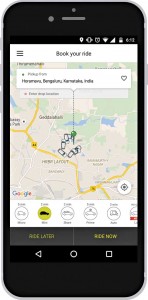



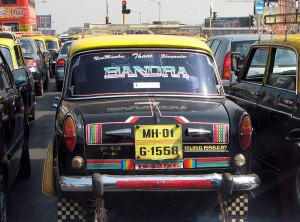
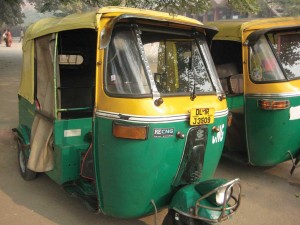
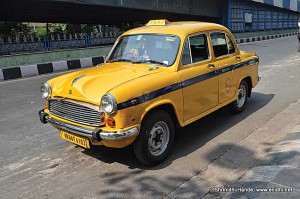
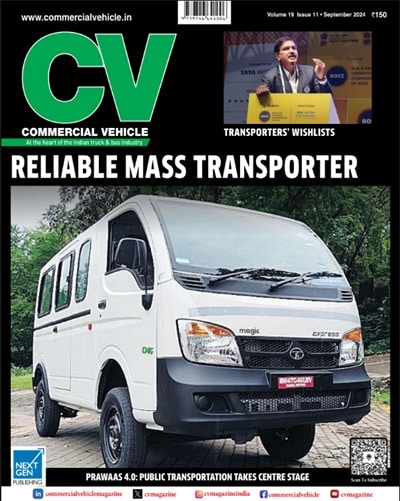
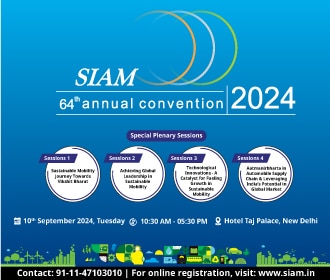
























Pingback: Cab Aggregators Continue to Speed | Car India : The World's Best Car Magazine